Southampton Airport's extended runway completed
- Published
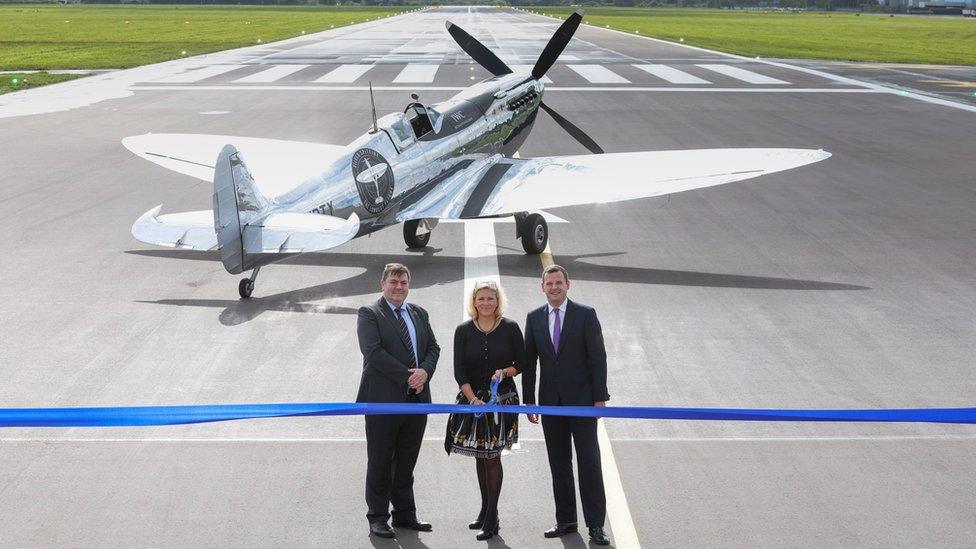
The first planes to use the runway took flight from the airport last month
An airport has marked the official completion of an extended runway.
Southampton Airport had the 164m (538ft) extension added between its existing runway and its northern boundary fence.
It said the longer runway was "absolutely critical" to its viability as a regional airport and to handle a wider variety of aircraft.
The airport faced local opposition concerned about the noise and disturbance caused by larger planes.
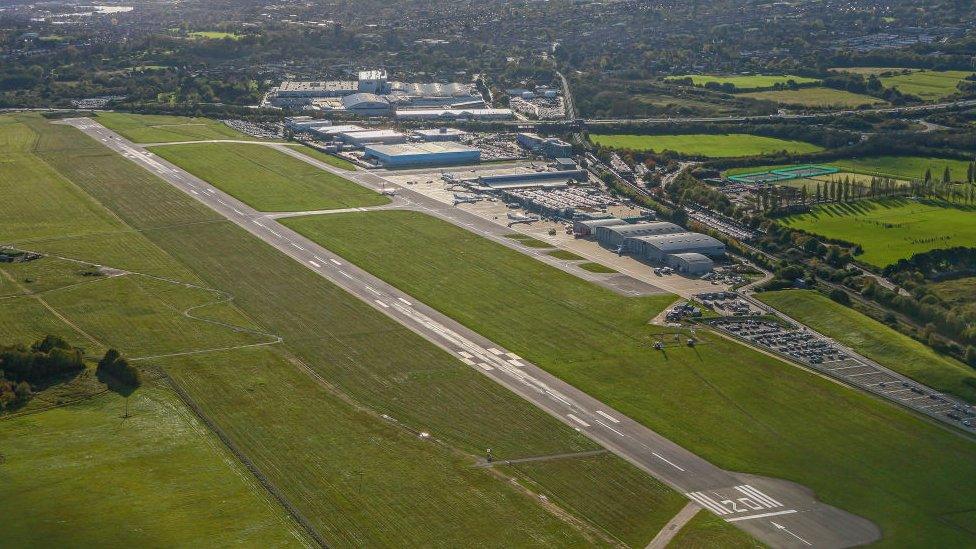
The airport believes the longer runway is "absolutely critical" to its future
The scheme was approved in April 2021, but campaigners claimed permission was "unlawfully granted".
However, last year the Court of Appeal upheld Eastleigh Borough Council's decision to approve the plans.
The airport has argued that the expansion will protect jobs and generate an extra £240m for the local economy by 2037.

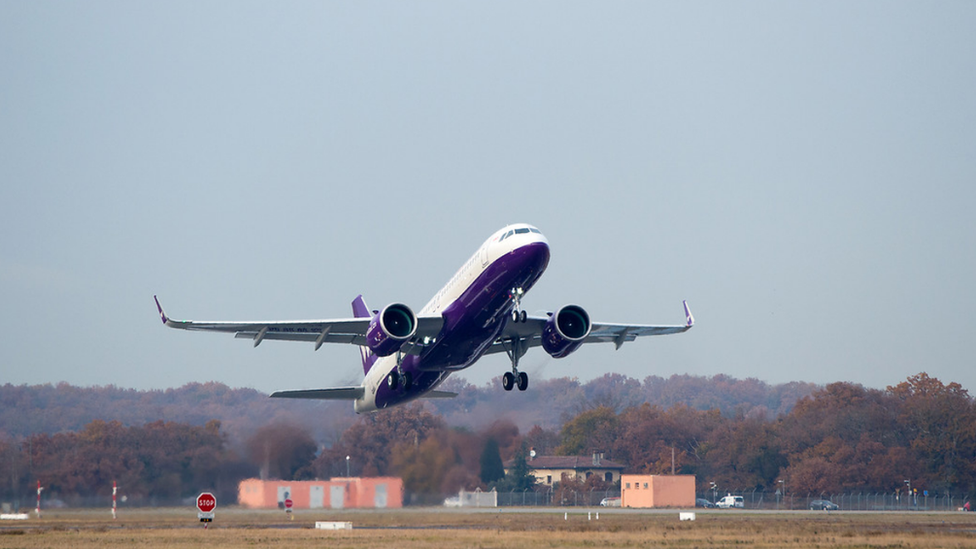
The airport says the runway extension will allow it to be used by larger planes such as the Airbus 320
Paul Clifton, BBC South Transport Correspondent
The extension was controversial. It took Eastleigh councillors 16 hours of heated debate to approve it - a difficult choice for a council that had declared a climate emergency.
The airport can now handle fully-laden holiday flights to Mediterranean destinations, perhaps as far away as the Greek islands or north Africa, using the sort of aircraft flown by EasyJet or Ryanair.
As yet, no airline has signed up for these longer sunshine flights.
Passenger numbers in 2022 were 640,000, still below one third of pre-Covid numbers.
The airport said its future rested on the extended tarmac, because of a reduction in business travel since the pandemic.
It also argued that refusing a longer runway would not reduce total carbon emissions. It would merely shift passengers and jobs to rival airports.
Deciding whether or not to allow it was a huge local issue.
One on level, a conflict between local jobs and holiday choices against increased noise pollution for an additional 46,000 people.
On another, it was about drawing a line in shifting sands.
Economic benefits now weighed against long-term decarbonisation, and a growing acceptance that addressing climate change also means travelling less.
As yesterday's government announcement shows, it's a subject where public opinion remains fluid.

The airport previously said its existing runway was "one of the shortest in the UK" and inhibited the use of larger planes, such as Airbus 320 and Boeing 737.
Campaigners objected on the grounds of climate change and noise, after planning documents revealed that the number of people affected by noise would go from 11,450 in 2020, to 46,050 in 2033 if the expansion went ahead.
The airport has pledged to try to mitigate the concerns raised.

Follow BBC South on Facebook, external, Twitter, external, or Instagram, external. Send your story ideas to south.newsonline@bbc.co.uk, external.
- Published28 January 2023
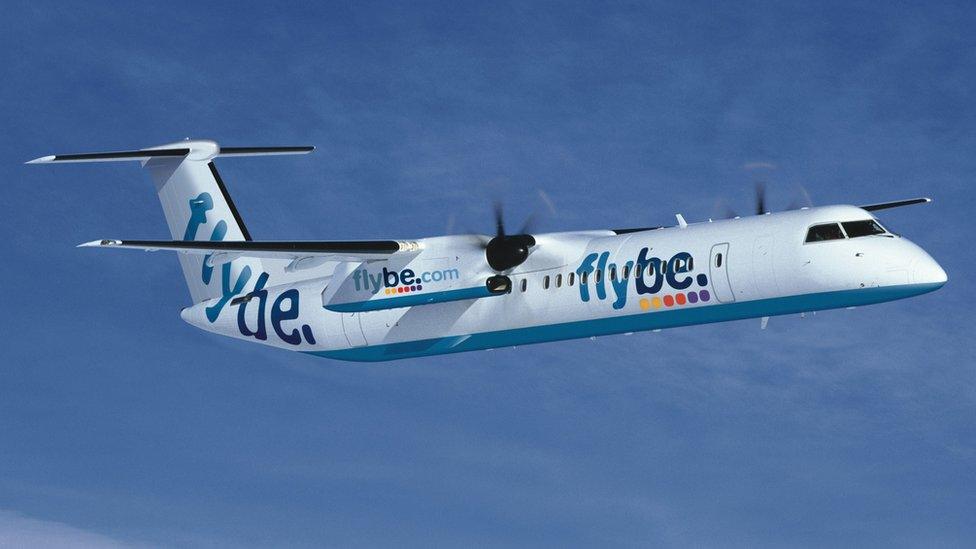
- Published1 August 2022

- Published23 May 2022
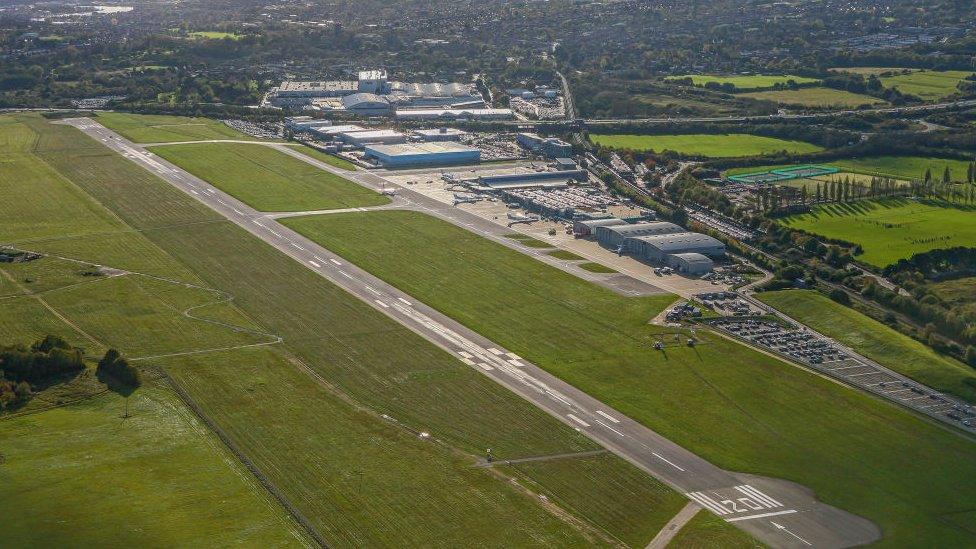
- Published10 December 2021

- Published16 June 2021

- Published26 March 2021
